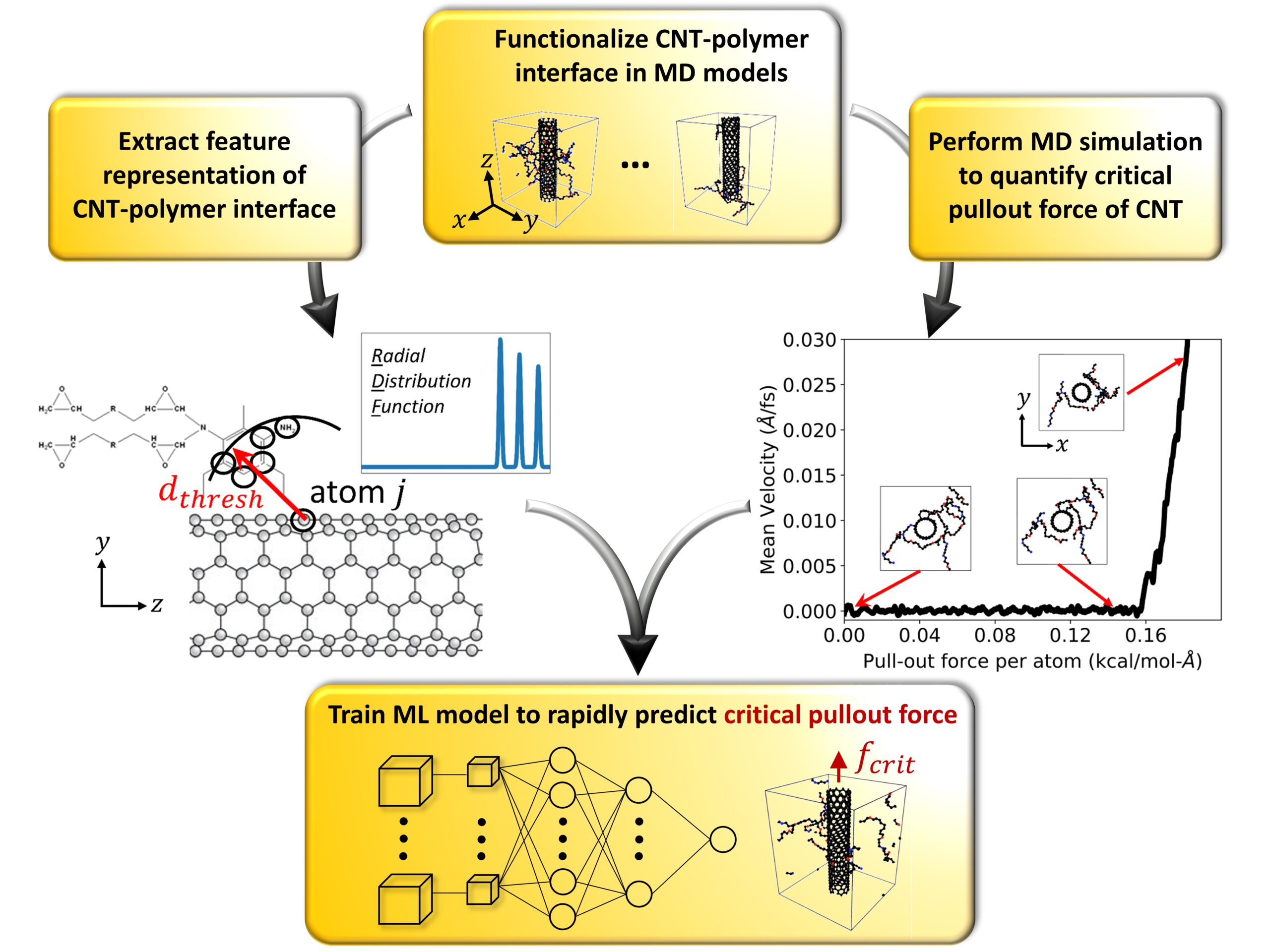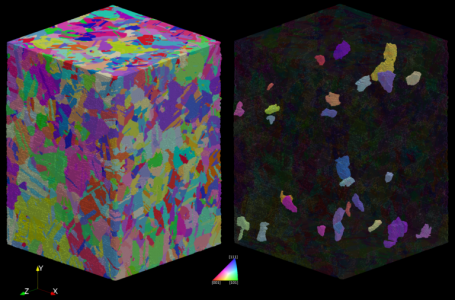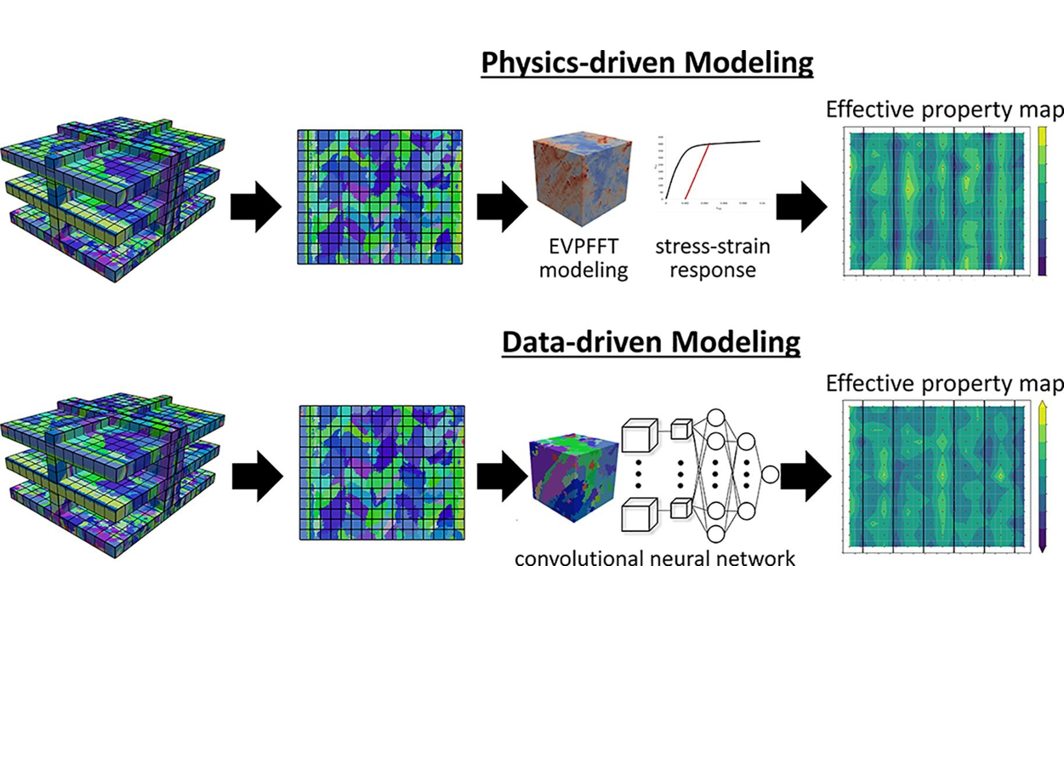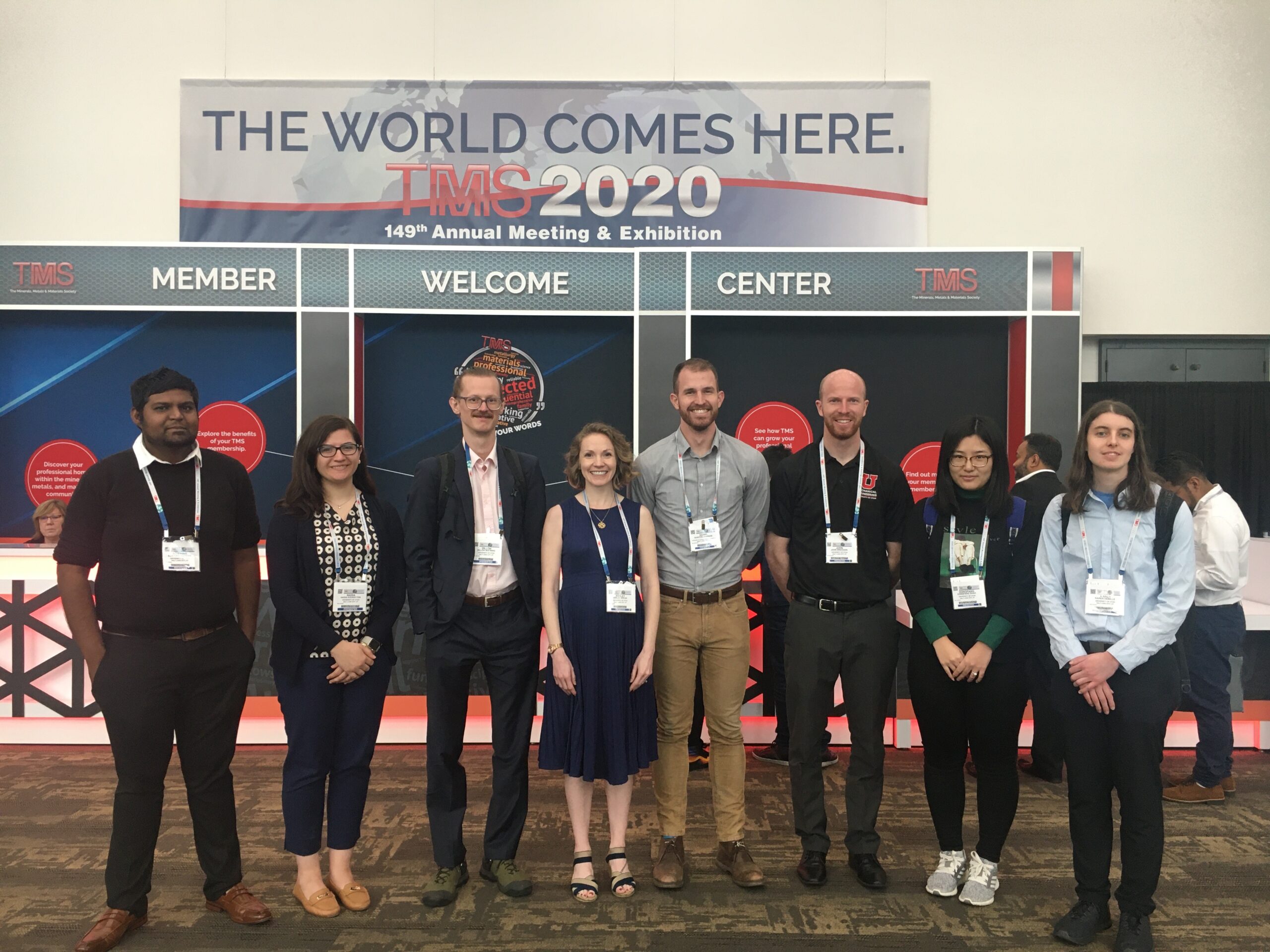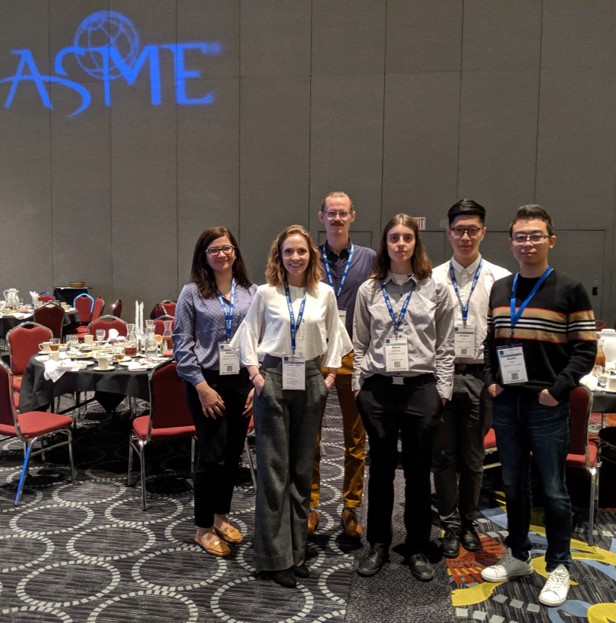The MMM Lab and collaborators recently published a review article describing the differences, similarities, and interactions between physics-driven and data-driven approaches for modeling process-structure-property relationships in metal additive manufacturing (AM). The article is published in the new open-access Journal of Physics: Materials. Access the article here! ...
Continue readingWork with Michigan Tech featured in Materials Today!
Our recent paper published in Composites Science and Technology was featured in Materials Today! The work is a collaboration with researchers from Michigan Tech and demonstrates the use of machine learning to accelerate failure predictions of carbon nanotube-polymer interfaces using training data from molecular dynamics simulations. The research is supported by the NASA Space Technology Research Institute US-COMP. Click here to read the news article....
Continue readingMMM Lab & Collaborators Named Top Performer in National Additive Manufacturing Modeling Challenge
MMM Lab & collaborators were named a Top Performer in a national additive manufacturing modeling challenge hosted by the Air Force Research Laboratory and America Makes. University of Utah mechanical engineering associate Professor Ashley Spear, undergraduate researcher Carter Cocke, Prof. Anthony Rollett from Carnegie Mellon University, and Dr. Ricardo Lebensohn from Los Alamos National Laboratory are a U led team and awardees of the America Makes and Air Force Research Laboratory (AFRL) Additive Manufacturing Modeling Challenge Series. The goal of the Challenge Series was to improve the accuracy of model predictions for metal, using INCONEL® nickel-chromium alloy 625 (IN625)....
Continue readingApplying Deep Learning to Additive Manufacturing of Metals
Abstract: In this work, we investigate the performance of data-driven modeling for mechanical property prediction of a simulated microstructural dataset. The dataset comprises realistic microstructural subvolumes of metal additive-manufactured stainless steel 316L and corresponding effective mechanical properties that were generated with a physics-driven modeling framework. The data-driven models leveraged for this work include Ridge regression, XGBoost, and a custom 3D convolutional neural network (CNN) based on VGGNet. Morphological and crystallographic features describing each microstructure serve as the inputs for the Ridge regression and XGBoost models. The CNN is trained with a 3D image of the microstructure represented by progressively...
Continue readingCongrats to Carl, John, and Jimmy!
Congratulations to Carl Herriott, John Erickson, and Junyan “Jimmy” He for successfully completing their M.S. degrees! Carl, John, and Jimmy have made significant contributions to the MMM Lab and to the literature in their fields. We are very proud of all three graduates and wish them the very best in their careers. Carl’s thesis, entitled Predicting Spatial Variability of Mechanical Properties in Additively Manufactured Metals with Multiphysics Modeling and Machine Learning, includes two journal articles, which can be accessed below. Carl is currently employed at Sandia National Laboratories in Livermore, CA. Herriott, C.F., Li, X., Kouraytem, N., Tari, V.,...
Continue readingEffect of Grain Structure on Crush Response of Open-Cell Metal Foam
Abstract: The mechanical response of open-cell metallic foams depends strongly on their hierarchical structure, which ranges from the grain scale, to the scale of individual struts, to the scale of the bulk foam. The objective of this study is to investigate the effect of grain structure on the compressive mechanical response of open-cell metallic foam using a crystal-plasticity finite-element-based framework. Multiple polycrystalline instantiations (overlaid on a foam volume derived from X-ray tomography) are simulated to quantify the grain-size effect on crushing response of investment-cast aluminum foam. The high-fidelity numerical framework captures the deformation mechanisms across multiple length scales and is...
Continue readingML+MD to predict strength of CNT-polymer interface
Abstract Modern aerospace applications require lightweight materials with exceptionally high strength and stiffness. Carbon nanotube (CNT)-reinforced composites have great potential in addressing these requirements. However, one critical factor limiting the potential of CNT-reinforced composites is the limited load transfer capability between CNTs through a polymer matrix, which arises due to low CNT-polymer interfacial shear strength at a molecular scale. While molecular dynamics (MD) simulations can be employed to investigate the CNT-polymer interface, such simulations are computationally expensive. It is thus intractable to explore a sufficiently large design space for interface modifications and optimization using MD simulations alone, motivating the...
Continue readingHigh-fidelity simulations of impact-induce skull fracture in infants
Abstract: Infant skull fractures are common in both accidental and abusive head trauma, but identifying the cause of injury may be challenging without adequate evidence. To better understand the mechanics of infant skull fracture and identify environmental variables that lead to certain skull fracture patterns, we developed an innovative computational framework that utilizes linear elastic fracture mechanics theory to predict skull fracture as a first step to study this problem. The finite-element method and adaptive-remeshing technique were employed to simulate high-fidelity, geometrically explicit crack propagation in an infant skull following impact. In the framework, three modes of stress intensity...
Continue readingMMM Lab represents at TMS annual meeting
MMM Lab members recently presented work at the TMS Annual Meeting in San Diego, CA. The following presentations included MMM Lab members: Determination of Representative Volume Elements for Small Cracks in Heterogeneous Domains via Convolutional Neural Networks: Karen DeMille, Ashley Spear Predicting Crack Location Using a Radial Distribution Function as a Unique Descriptor of Pore Networks: John Erickson, Aowabin Rahman, Ashley Spear Characterization of Fatigue Short Crack Growth in Rare-earth Magnesium Alloy WE43 using High Energy X-ray Diffraction Microscopy: Duncan Greeley (Univ. of Michigan), Jacob Adams (Univ. of Michigan), Peter Kenesei (Argonne National Laboratory), Ashley Spear, John Allison (Univ. of...
Continue readingFive talks at ASME IMECE
MMM Lab members (Dr. Nadia Kouraytem, Dillon Watring, Karen DeMille, Jimmy He, and Jiawei Yan) presented their recent research results at the ASME International Mechanical Engineering Congress & Exposition (IMECE) held in our hometown, Salt Lake City. Prof. Spear also sat on a panel aimed at helping new and aspiring faculty members. ...
Continue reading
